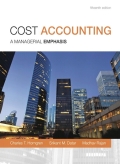
Five-step decision-making process:
Five-step decision-making process not only help in planning the various activities of the organization but also in evaluating performance and taking corrective measures when there is a deviation from the charted path.
The five-step decision-making process is explained as below:
1. Identify the problems and uncertainties: It involves identifying the loopholes that act as a bridge between the expected and actual results. Proper diagnosis helps in bringing out the problem involved and finding out the remedial measures.
2. Obtain information: It involves acquiring information about a problem before making a decision. It assists managers to attain better understanding of the uncertainties. Information can be gathered from different sources, like internal sources, customers, internet, competitors, etc, Information may be current prices of materials, labor, selling price of the product, current demand, etc.
3. Make prediction about the future: On the basis of the information gathered, it is significant to make predictions about the future. This requires correct judgments. Accountants should not be biased in making a judgment. Prediction can be related to the prices of materials, labor, current demand, etc.
4. Make decision by choosing among alternatives: When making decisions, strategy plays an important role. People in different parts of the company at different times are involved in making decisions. Stability with strategy helps individuals and timelines bind together thereby providing a common purpose for disparate decisions. Aligning decisions with strategy helps an organization to implement its strategy and attain its goals.
5. Implement the decision, evaluate performance, and learn:
To classify: The given actions as a step in the five-step decision-making process.
Want to see the full answer?
Check out a sample textbook solution
Chapter 1 Solutions
Cost Accounting
- Suppose the required reserve ratio is 0.20 and individuals hold no cash. Total bank deposits are $150 million, and the banks hold $40 million in reserves. How much more money can the bank create if it does not hold excess reserves?arrow_forwardElena gives stock to Jake that has a tax basis of $4,500. At the time of the gift, the stock is worth only $3,800. Jake later sells the stock for $5,000. What amount of gain must Jake report on the sale?arrow_forwardWhat is total variable overhead ?arrow_forward
- Please given correct answer for General accounting question I need step by step explanationarrow_forwardAccounting problemarrow_forwardNo ai if image is blurr or value is not showing properly. please comment below i will write values. if you answer with incorrect values i will give unhelpful confirm.arrow_forward
- Could you explain the steps for solving this financial accounting question accurately?arrow_forwardChang Company uses a standard costing system. In August, 7,960 actual labor hours were worked at a rate of $17.55 per hour. The standard number of hours is 6,350 and the standard wage rate is $15.45 per hour. Determine the Labor Rate and Variance Labor Efficiency Variance.arrow_forwardWhat is Delta Corporation's taxable incomearrow_forward

 AccountingAccountingISBN:9781337272094Author:WARREN, Carl S., Reeve, James M., Duchac, Jonathan E.Publisher:Cengage Learning,
AccountingAccountingISBN:9781337272094Author:WARREN, Carl S., Reeve, James M., Duchac, Jonathan E.Publisher:Cengage Learning, Accounting Information SystemsAccountingISBN:9781337619202Author:Hall, James A.Publisher:Cengage Learning,
Accounting Information SystemsAccountingISBN:9781337619202Author:Hall, James A.Publisher:Cengage Learning, Horngren's Cost Accounting: A Managerial Emphasis...AccountingISBN:9780134475585Author:Srikant M. Datar, Madhav V. RajanPublisher:PEARSON
Horngren's Cost Accounting: A Managerial Emphasis...AccountingISBN:9780134475585Author:Srikant M. Datar, Madhav V. RajanPublisher:PEARSON Intermediate AccountingAccountingISBN:9781259722660Author:J. David Spiceland, Mark W. Nelson, Wayne M ThomasPublisher:McGraw-Hill Education
Intermediate AccountingAccountingISBN:9781259722660Author:J. David Spiceland, Mark W. Nelson, Wayne M ThomasPublisher:McGraw-Hill Education Financial and Managerial AccountingAccountingISBN:9781259726705Author:John J Wild, Ken W. Shaw, Barbara Chiappetta Fundamental Accounting PrinciplesPublisher:McGraw-Hill Education
Financial and Managerial AccountingAccountingISBN:9781259726705Author:John J Wild, Ken W. Shaw, Barbara Chiappetta Fundamental Accounting PrinciplesPublisher:McGraw-Hill Education





